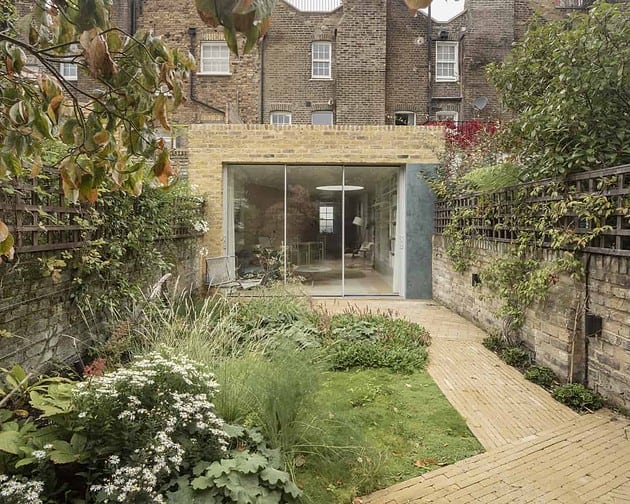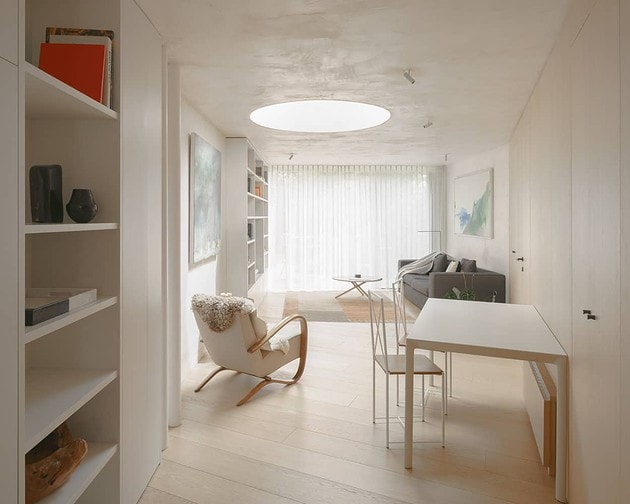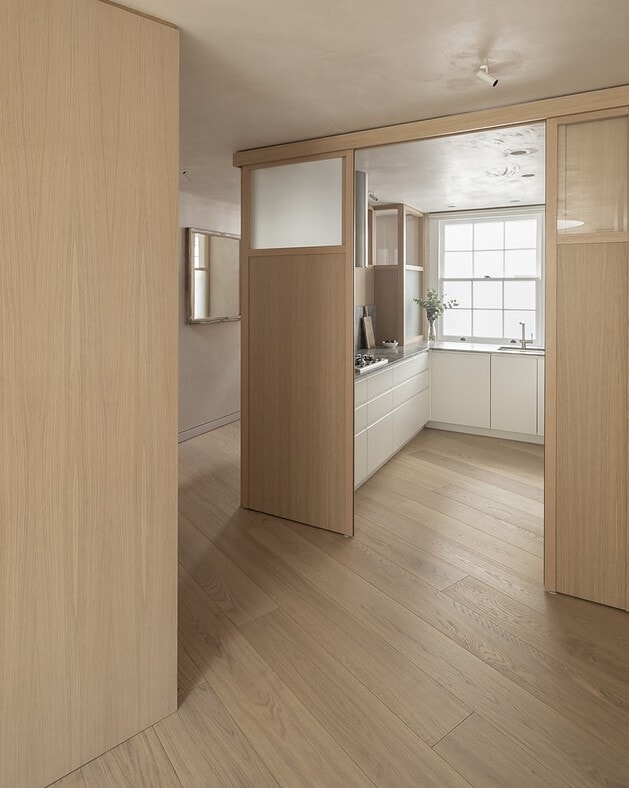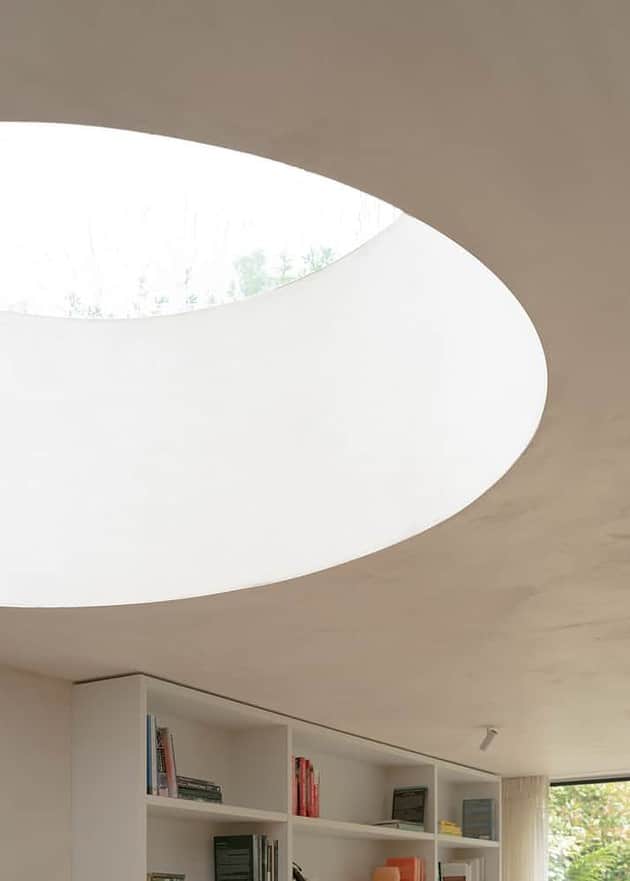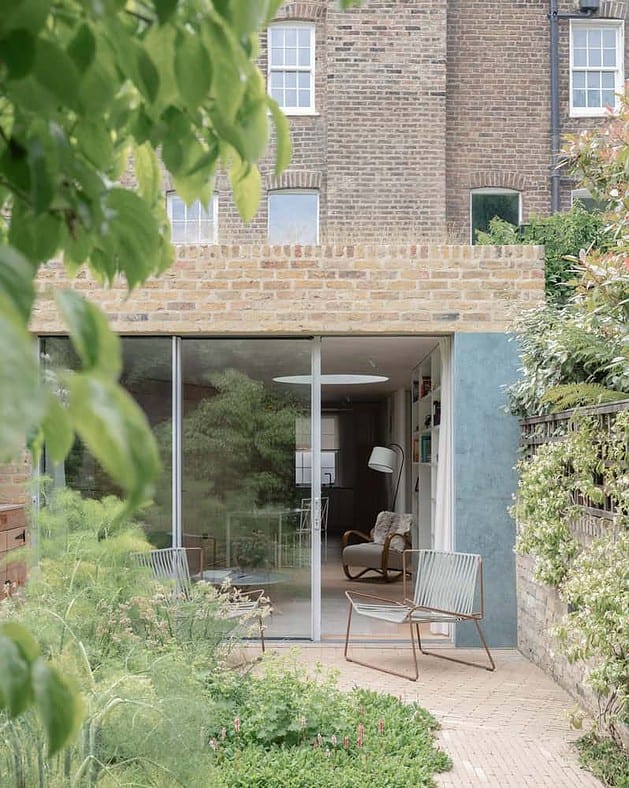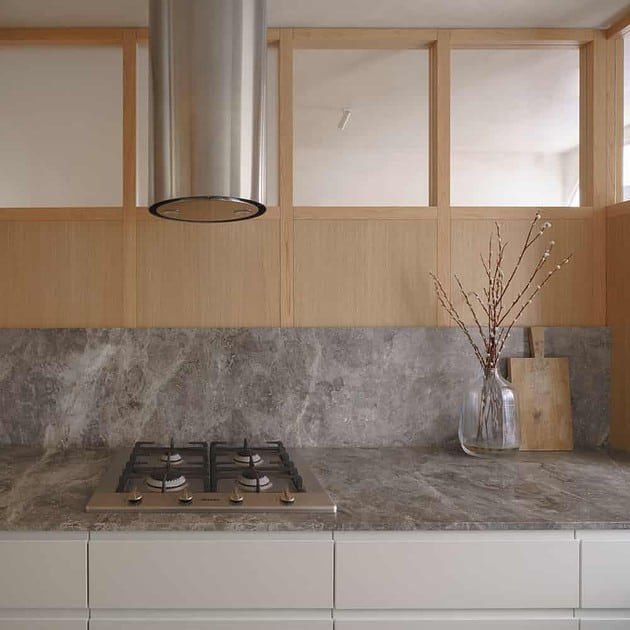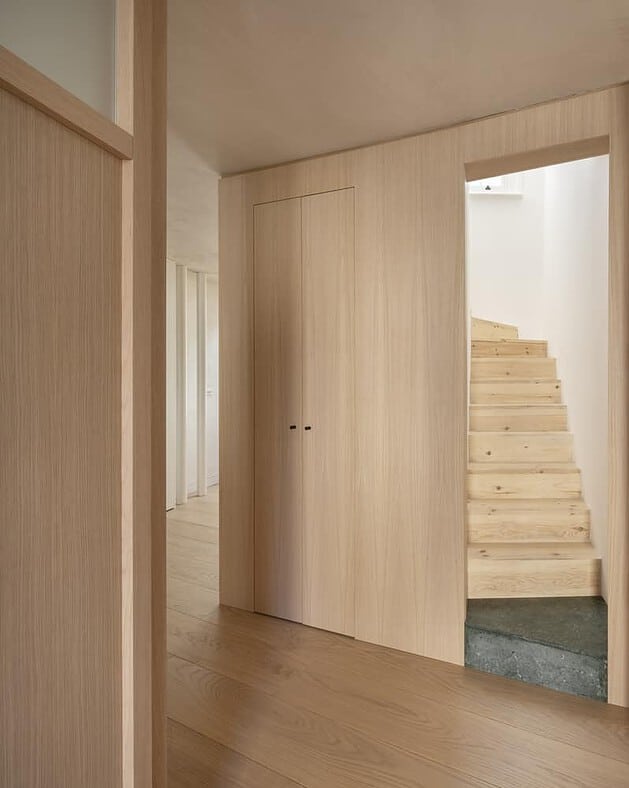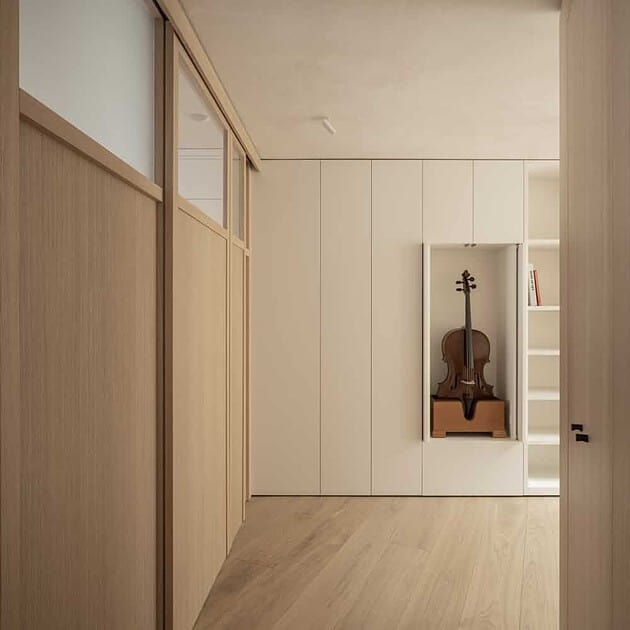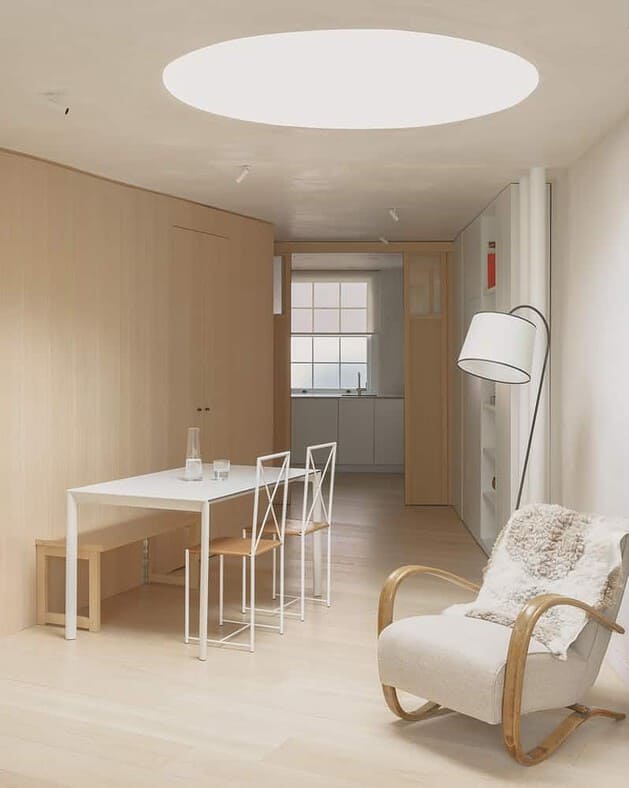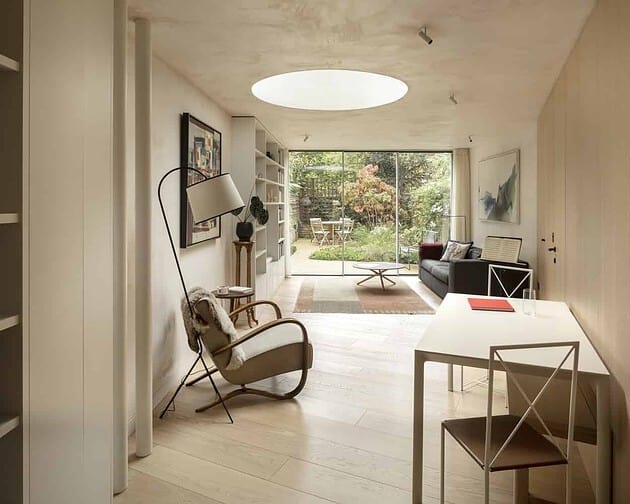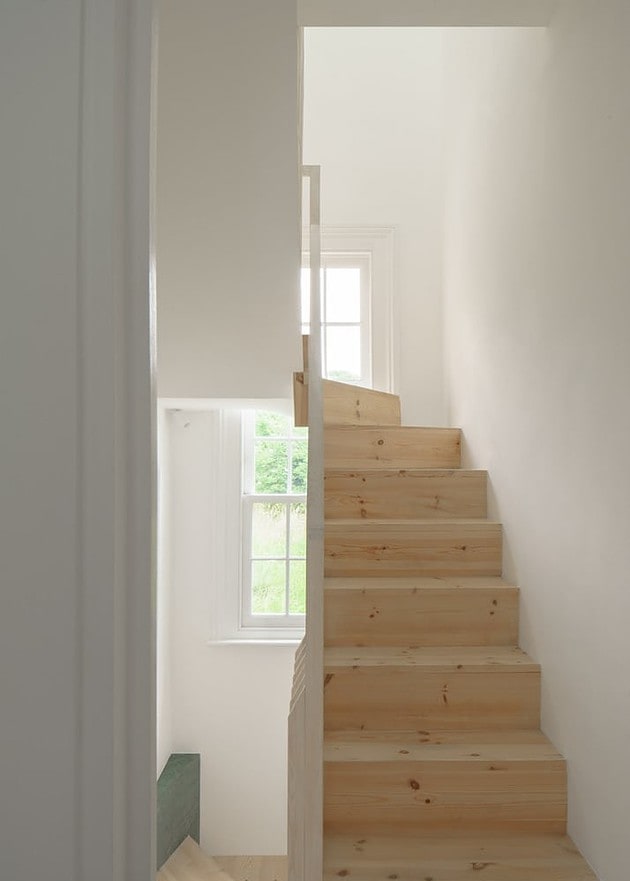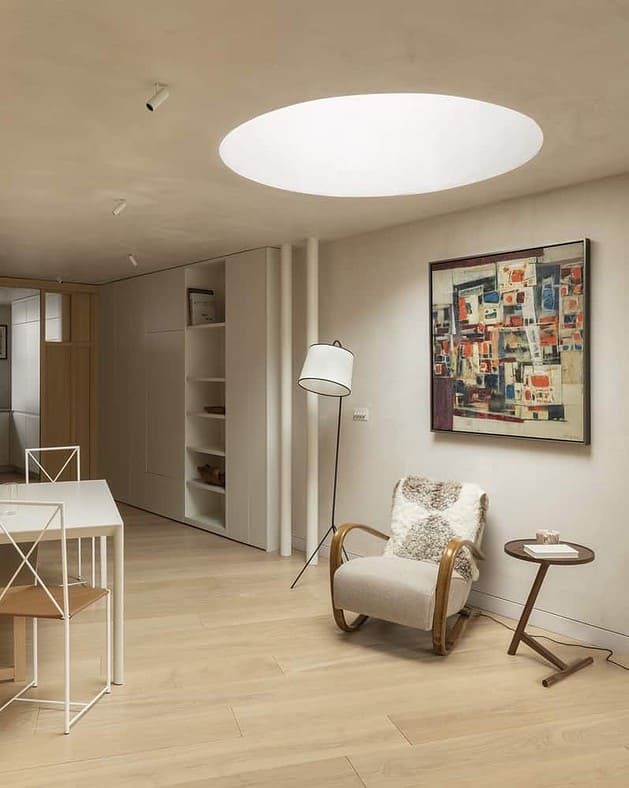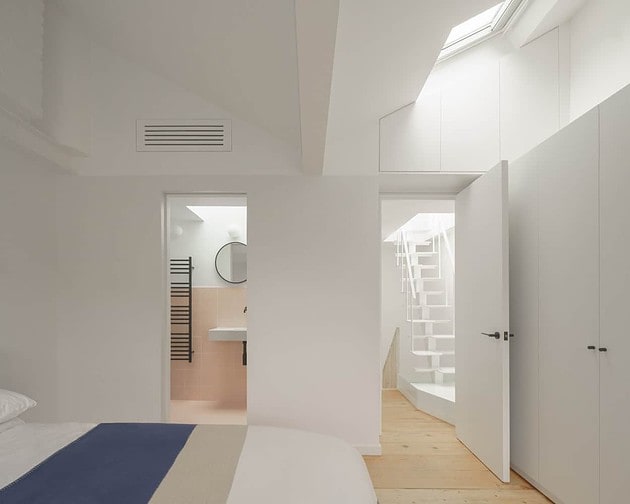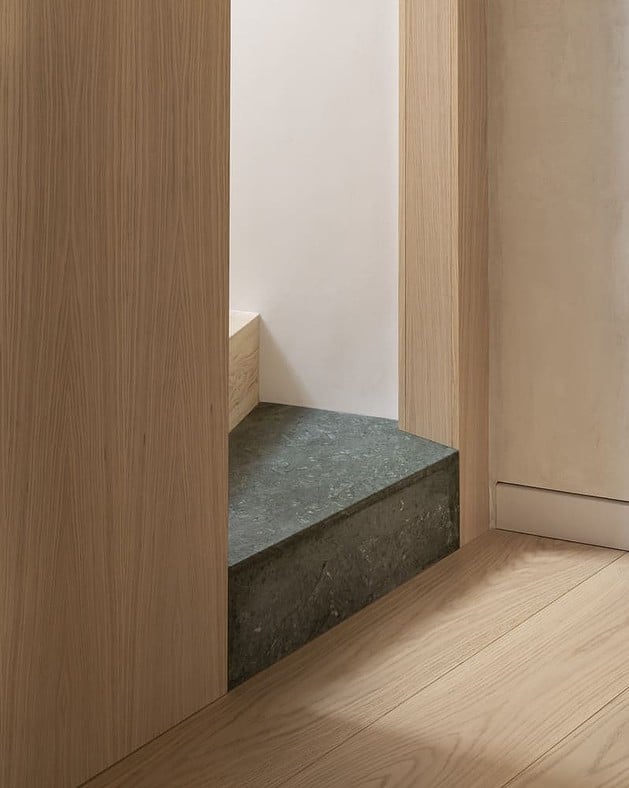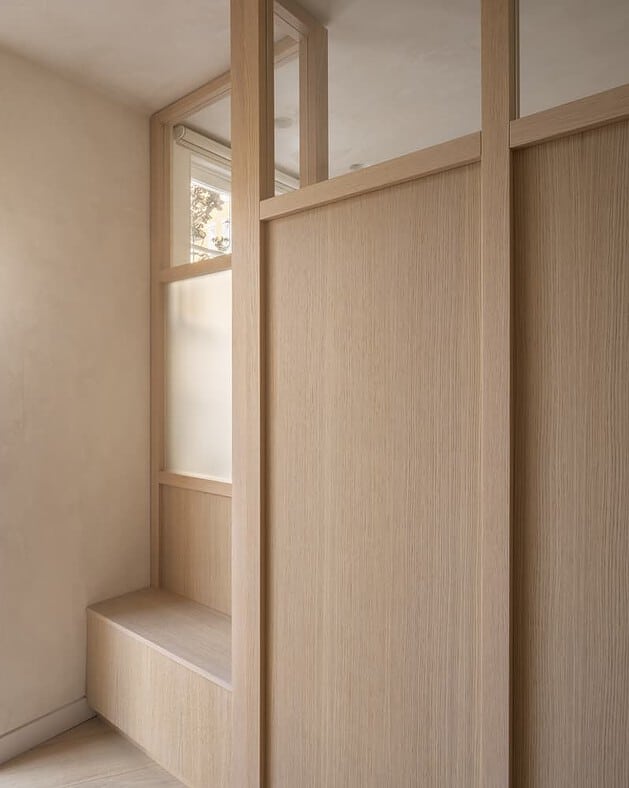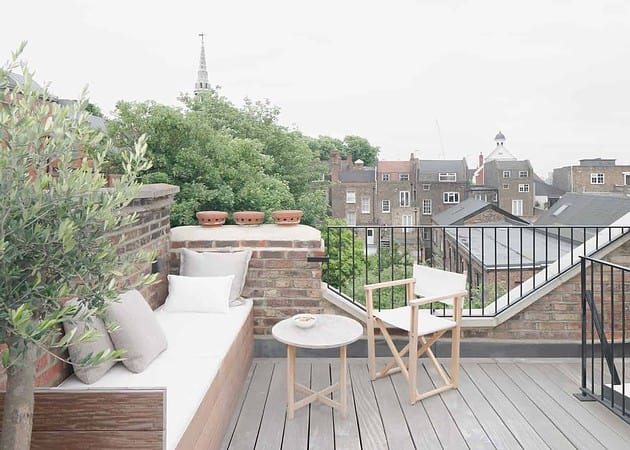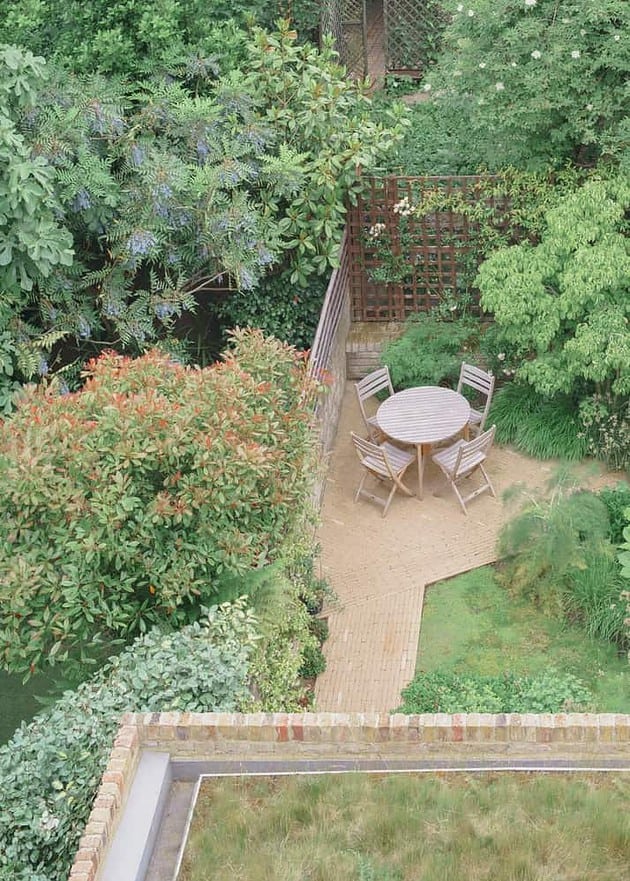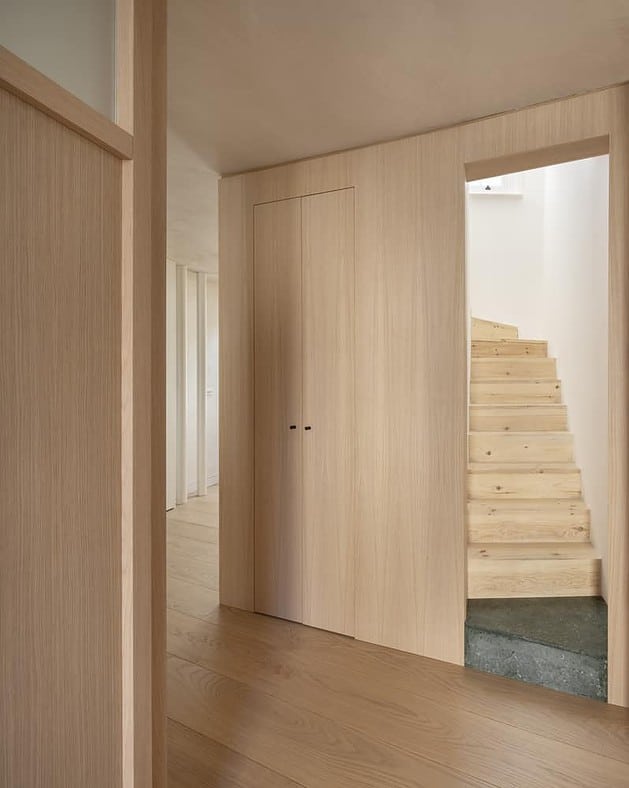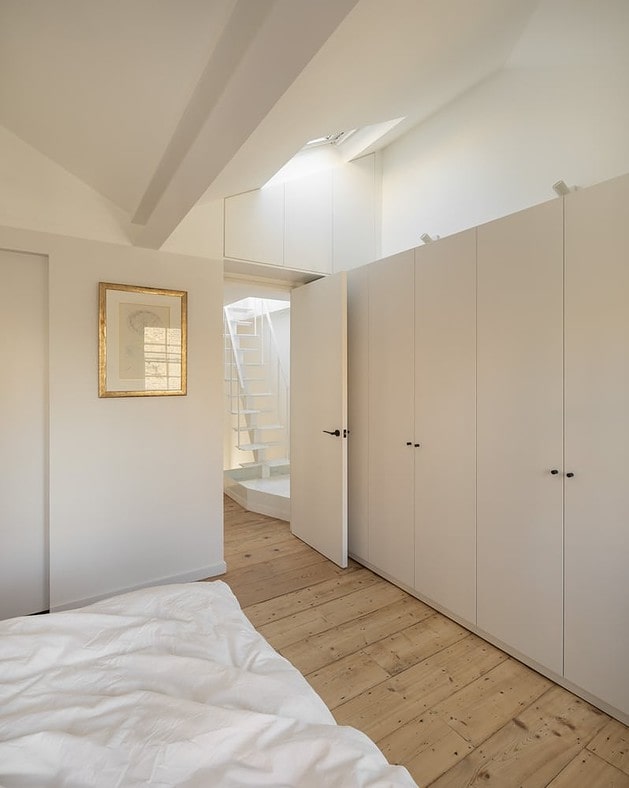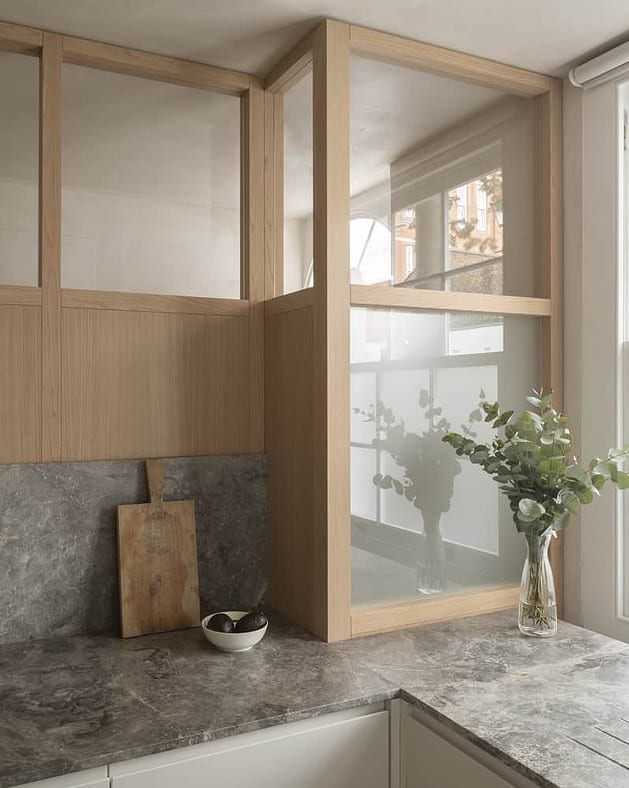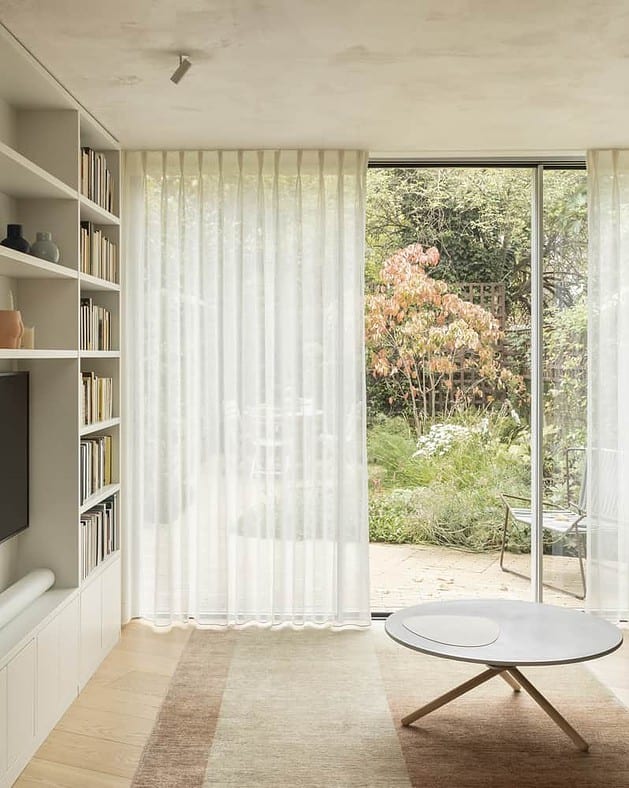Project: House for Cellist
Architects: Unagru Architecture Urbanism
Location: London, United Kingdom
Year: 2021
Photographs by: Building Narratives, Stale Eriksen
House for Cellist by Unagru Architecture Urbanism
London’s cramped townhouse sheds its skin, reborn as a light-filled haven. Music fills the air, thanks to a dedicated space seamlessly woven into the contemporary design. Walls dissolve, replaced by an open plan that flows effortlessly into a modern kitchen. Flexibility reigns, catering to every whim. Sustainability whispers through the walls – think snug insulation, double-glazed windows, and a verdant roof. A nod to the past – a rugged brick chimney – stands sentinel, whispering tales of times gone by. This transformation is a symphony of light, space, and modern living, perfectly harmonizing the client’s passions for life and music.
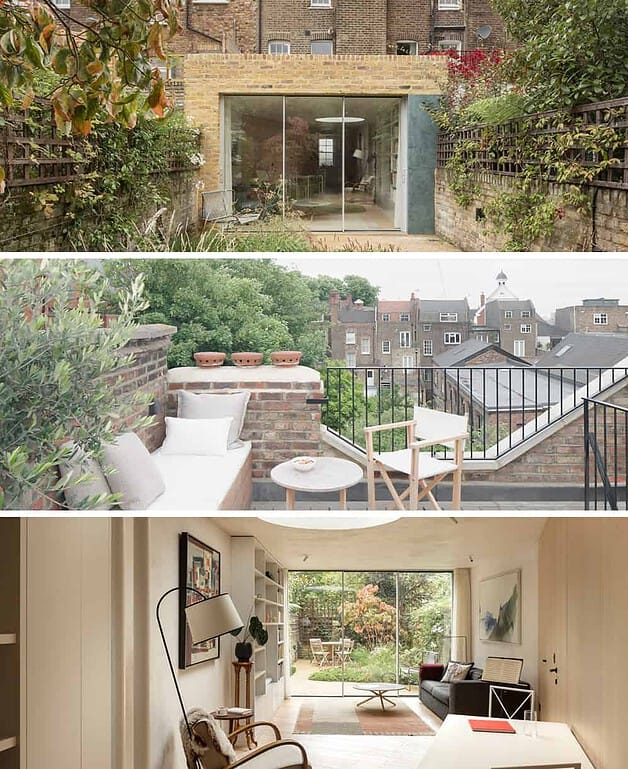
Client Brief
Our clients wanted to sensitively transform a small, traditional London townhouse into a contemporary, light, and spacious home, with enough space for a quartet to rehearse. The new interior space needed to have a direct relationship with the garden and be protected from the pavement immediately outside the front window. A roof terrace would provide an unconventional and unique second open space.
The house also needed to be equipped with contemporary comforts, a ground floor WC, a laundry cabinet, a new ensuite to the master bedroom, an office to work from home, and plenty of storage. Interestingly, the client was not too concerned about having a dining table as long as there was enough rehearsal space. Part of our work has been to create a flexible layout that can accommodate all the requirements, including the dining table.
Design Statement
The original three-story townhouse was built around 1850 as part of an infill terrace development in north London. The current owner wanted to transform the house as part of a much-needed extensive refurbishment (brick and timber structures needed reviewing) to create a bright, spacious, contemporary home to live in and play music in. We added a generous single-story ground-floor rear extension and a roof terrace on the top floor, replacing old additions to the house (dating to the 1970s and 1990s.)
The ground floor plan is one sizeable broken plan, with a wide entrance hall organically flowing into the rest of the space; the kitchen is at the front of the house, enclosed in semi-transparent wood and a glass box with sliding doors. The private open-plan living space is open to the rear garden. The internal layout is a reflection on space continuity, a study in compression and expansion, and an exercise in flexibility. The livable space on the ground floor is outlined by the intersection between the rectangular footprint and a triangular prism enclosing all the service areas and the stairs.
The resulting space is open to the flow: there are no corridors or doors, just a box semi-enclosing the kitchen and a circular skylight. The angles generated by the intersection of the triangle create pockets of privacy: the garden is not visible from the entrance, and one must reach the middle of the house before appreciating the depth of the extension and the openness of the space. The rotated angles guide the free flow around the ground floor and comfortably embrace the middle of the layout to create an acoustic, organic interior.
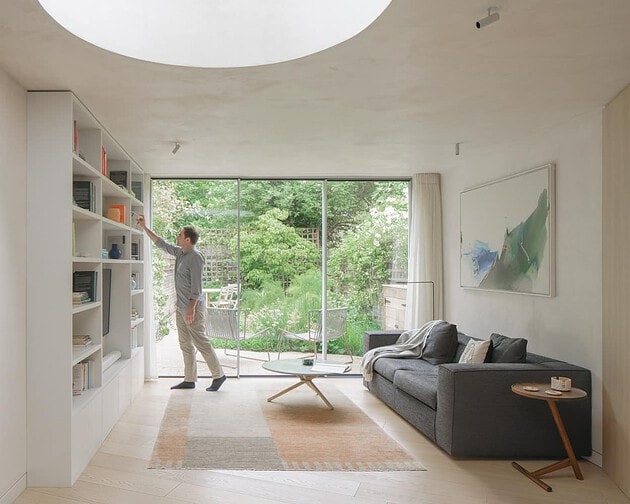
The middle of the ground floor layout absorbs all the flexibility required in a contemporary house for a musician: the storage volume also works as WC, dining table bench, and Bar. The dining table can be moved to the side to make space for rehearsals. A circular roof light marks this area dramatically, drawing natural daylight deep within and softening the house’s shapes and shadows. Plants inhabiting the garden and the green roof peer through the rear glass doors and the roof light.
The roof terrace is accessed through a bespoke steel staircase on the second floor and a bespoke electric roof hatch; the base of the stair acts as a planter, and an interior tap will serve as an irrigation system. Traces of the past are evident throughout the house; we were mindful to enhance rather than lose any of the characters of the original architecture. In the master bedroom, on the top floor, the original brick chimney is left exposed, bringing texture to the space and adding a unique feature to the room.
The material palette contributes to the tranquility and the acoustic comfort of the interior: light oak floors, matching joinery, and rough lime plaster are the dominant elements on the ground floor. Stone details (mostly green marble) are scattered around the house to underline threshold areas. The rear elevation is clad in reclaimed bricks with a stone upright (a design reference to Tony Fretton Architects’ Molenplein Houses).
The roof terrace is finished in lead and IPA decking. Sustainability strategy: The ground floor and roof have been rebuilt to provide adequate insulation. All the windows that did not have secondary glazing have been replaced with double-glazed units. The extension is covered with a wildflower green roof that enhances biodiversity and reduces the risk of local flooding.

